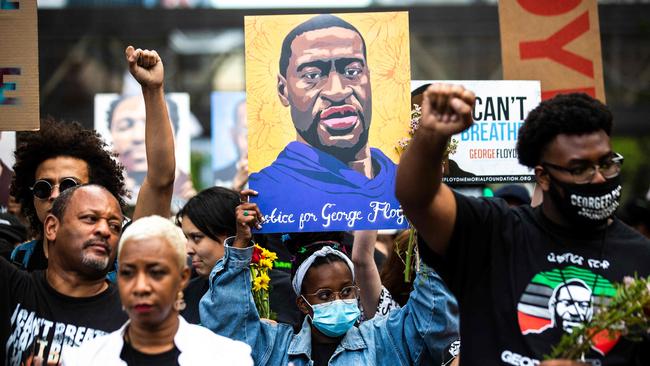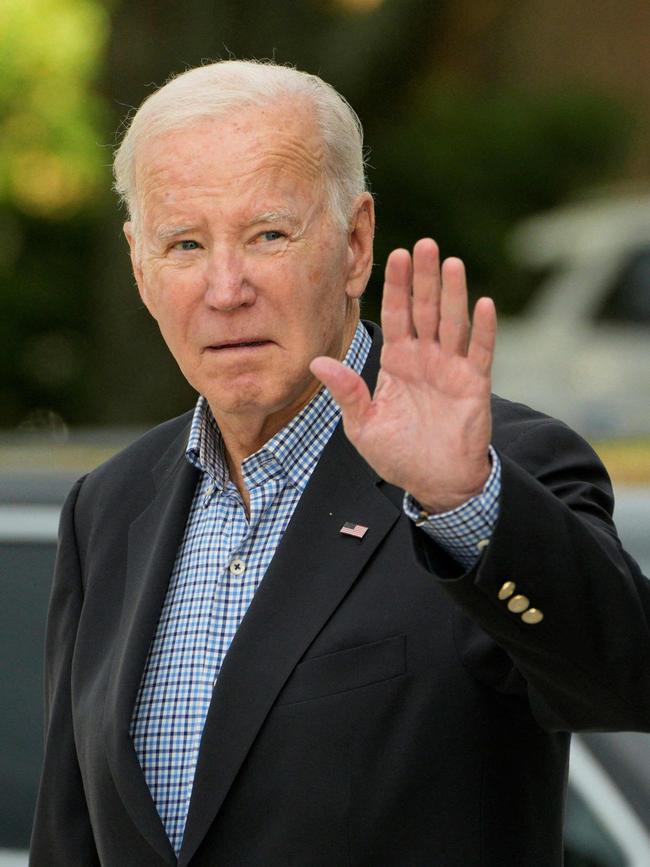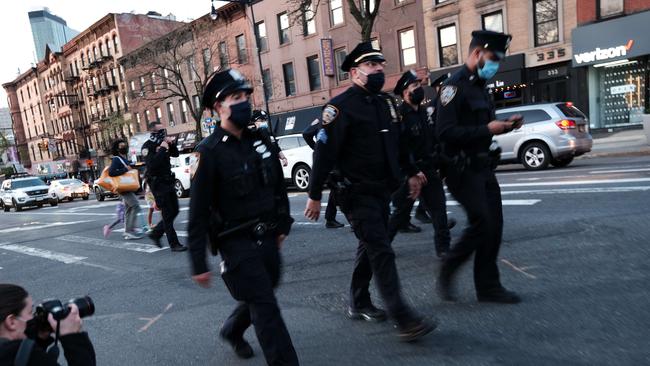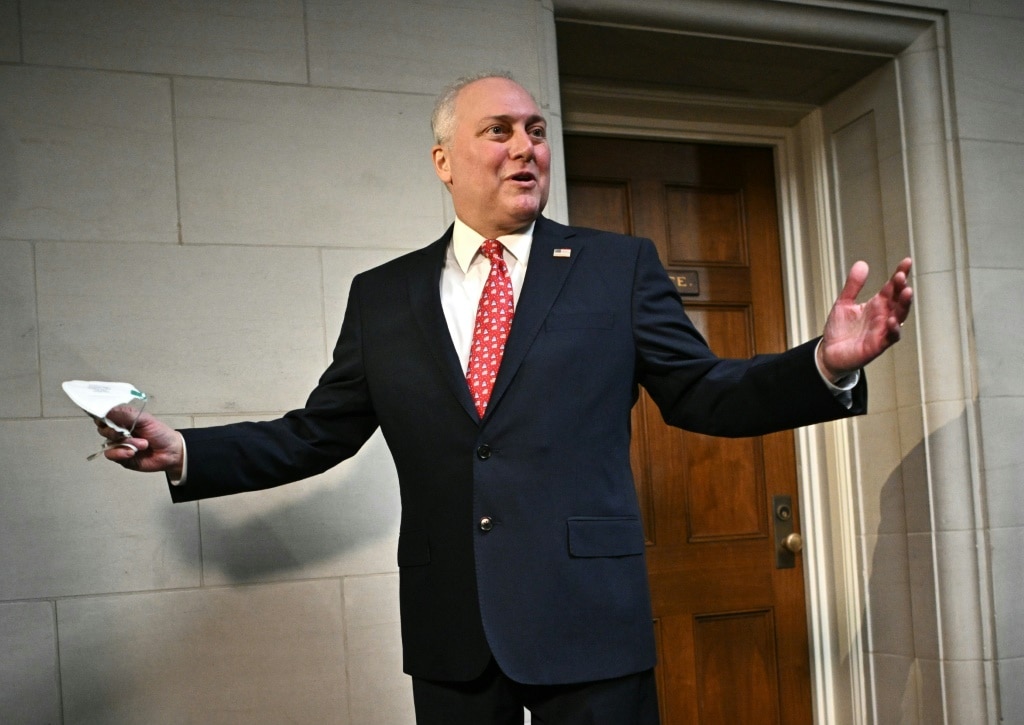Black-white racial divide fuelled by US media bias
Whatever the racial divide Australia’s voice referendum created, or crystallised, we can be grateful that it pales in comparison to the racialisation of life in the US.

Nowhere is this more obvious in the US than in the reporting of violent crime, where the media and elements in the Democratic Party seek to create the impression white Americans are uniquely dangerous citizens.
President Joe Biden has repeatedly invoked “white supremacy” as “the single most dangerous terrorist threat” to the US – that’s ahead of Islamic fundamentalism, Russian or Chinese cyber attacks or the malicious release of a new virus.
Biden might be forgiven for believing such rubbish if he only reads mainstream reporting of US crime, which routinely highlights crimes by white people, and downplays or ignores crime by black people.
In August, two teenagers in Las Vegas took a stolen car for a joy ride and deliberately ploughed into a 64-year-old male cyclist, who was out for his morning exercise. One of them filmed the hideous episode on his phone. “Yeah, hit his arse,” the passenger told his friend, leaving the father of two children to die on the side of the road.
The video went viral on social media, but the mainstream media showed little interest, at least in comparison, say, to the murder of George Floyd by a police officer in 2020, which was not first-degree murder. But the first story clearly didn’t fit “the narrative”. The two teens were black Americans, and the cyclist, a retired police officer, was white. In April, Reuters slapped a picture of a grieving white family on a story about black teenagers who had murdered other black teenagers, in a particularly brazen example of this standard.
These aren’t just my random impressions. “There’s now a ratio of 21 news mentions of black victims of police force for every one article covering a white victim, up from nine before George Floyd was killed,” says Zach Goldberg, an analyst at the Manhattan Institute, who has studied specifically coverage of crime involving police. “Around 2012 we see a significant and unprecedented increase in the racialisation of news coverage,” Goldberg tells me in an interview.
One of his colleagues at Manhattan, Charles Lehman, who uses a similar analytical technique, found prestige US newspapers were “three to four times more likely” to mention the race of an offender if he was white.
Where they do bother to mention the race of a black offender at all, they “come overwhelmingly toward the end of the piece”.

Such presentation understandably fuels racial division that tears at America’s social fabric, and propagates malign race relations around the world.
The share of black Americans who say relations between whites and blacks are “very” or “somewhat” good has fallen steadily from 66 per cent in 2013 to 33 per cent last year, according to Pew Research. Among white Americans, the share has fallen from 72 per cent to 43 per cent across the same period.
The data tell a different story. Of the 12,440 arrests for murder in 2020, according to US Department of Justice statistics, 5680 were white, and 6380 were black, and a remarkably tiny 210 were Asian, even though that group makes up around 7 per cent of the US population.
Judging individuals’ actions by the colour of their skin is simplistic and offensive. Crime is caused by a host of complex socio-economic and psychological factors, not simply “race”. Even on its own simplistic terms, the narrative of a supposed “white threat” is nonsense.
“In 2020, the largest percentage of violent incidents committed against white (69 per cent) and black (66 per cent) victims were intra-racial (committed by an offender of the same race or ethnicity as the victim),” the US Bureau of Justice concluded in its annual latest report.
In 2020, according to Associated Press, 38 per cent of major city police chiefs were black Americans – about three times the black share of the US population – making a mockery of the idea of systematic anti-black bias in the police force.
Yet in no way do these statistics support the narrative the media tries to push. And the desire to divide society into warring groups isn’t limited to race. “Hate crimes”, those allegedly committed because of the victim’s race, sex or sexual orientation, are apparently soaring, if you skim the media.
Yet they are a minuscule and virtually unchanged share of US violent crime: 0.4 per cent of the 1.3 million “aggregate estimated violent crime volume” for 2021, according to FBI crime data.

The almost universal belief that the horrific 2016 massacre at Pulse nightclub, a gay venue, in Orlando, Florida, was motivated by anti-LGBT hate, is incontrovertibly false.
The actual evidence clearly shows the perpetrator, terrorist Omar Mateen, had no idea the club was a gay establishment, and simply wanted to enact retribution on US citizens for a recent bombing in Iraq and Syria.
“Anti-LGBT animus was not part of that massacre. It dishonours the memory of the victims – and the LGBT cause – to lie about what happened,” Glenn Greenwald, an investigative (and gay) journalist, has pointed out, referring to court evidence. But again, that’s not “the narrative” many journalists want to write, preferring to shoehorn crimes into a cookie-cutter framework of nasty white people “hating” minorities.
Why the racialisation of crime reporting has surged is hard to explain. Perhaps it’s because adding a racial dimension to crime attracts more clicks, in an age where they matter so much more than they once did.
Or perhaps most journalists use violent crime to push the idea of “systemic racism”, whose existence has unfortunately become a core tenet of so-called progressive thinking, and the justification used to support the growing army of jobs in government and big corporations.
Either way, it’s too bad for the US, which has in fact endured a major and sustained crime wave since the Covid-19 lockdowns that had nothing to do with race.








Whatever the racial divide Australia’s voice referendum created, or crystallised, we can be grateful that it pales in comparison to the racialisation of life in the US.